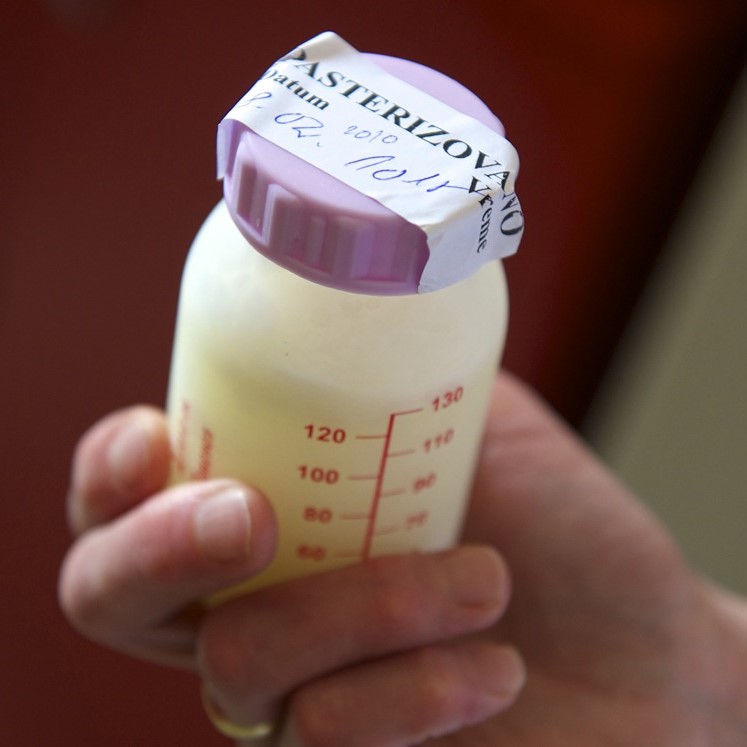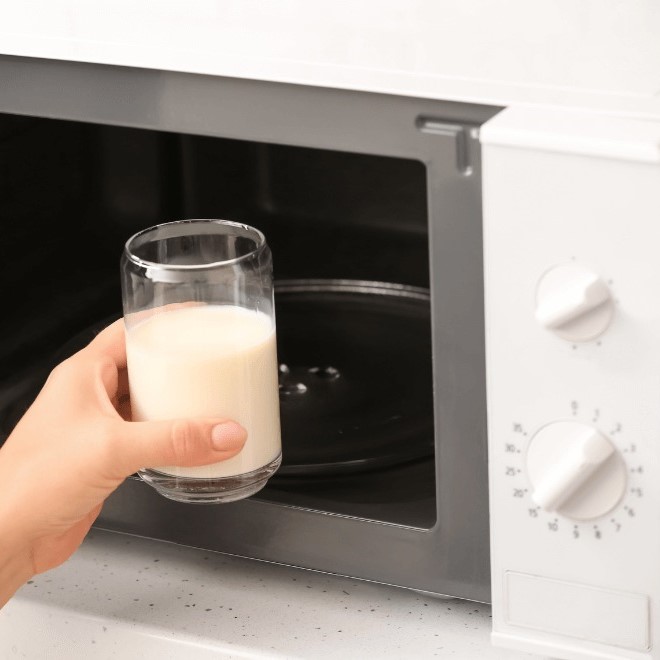Introduction to Microwaving Breast Milk
Microwaving breast milk seems quick and easy. But is it safe? Many parents ask, ‘can you microwave breast milk?’ They want to ensure their baby’s health and safety. It’s crucial to know the risks and proper methods.
When you microwave breast milk, it can heat unevenly. This creates ‘hot spots’ that might burn a baby’s mouth. Uneven heating also leads to the destruction of vital nutrients. Breast milk has delicate components. These include antibodies and enzymes. Microwaving can damage these.
So, ‘can you microwave breast milk?’ The answer is not straightforward. There are safer options to consider. Understanding the risks will guide better choices. In this blog, we will explore alternatives too. We aim for the safest ways to handle and serve breast milk. Stay tuned for more insights on store, thaw, warm, and test breast milk safely.
The Risks of Microwaving Breast Milk
Microwaving breast milk is risky. This method can harm its quality. Let’s discuss these risks in detail. When breast milk gets microwaved, it might heat unevenly. This may create dangerous ‘hot spots’. A baby’s mouth could get burned from them. It’s not just about the temperature. Uneven heating can also break down important nutrients. Breast milk has antibodies and special enzymes. They help a baby’s immune system. Microwaving can damage these. It can lower the milk’s health benefits. Moreover, the heat can destroy some vitamins and fats. These are crucial for a baby’s growth. To sum up, microwaving breast milk can reduce its nutritional value. It can also raise the risk of burns. Be cautious and consider safer ways to warm breast milk.
Alternatives to Microwaving Breast Milk
Given the risks involved in microwaving breast milk, parents may seek safer options. These alternatives ensure even warming and protect the nutrients. They also prevent the risk of hot spots and burns. Here are some safer methods to consider:
- Water Bath: Place the bottle of breast milk in a bowl of warm water. This allows for gentle heating.
- Bottle Warmer: Use a dedicated bottle warmer designed for breast milk. It heats milk slowly and evenly.
- Running Water: Hold the bottle under lukewarm running water. This can gradually increase the temperature.
- Room Temperature: Allow frozen or refrigerated milk to reach room temperature naturally. This takes more time but is safe.
- Stove Top: Warm water on a stove and place the bottle in it. Be sure to keep the water on low heat.
When you use these methods, always check the milk’s temperature. Test it on your wrist to ensure it’s not too hot. Remember, patience is key in preserving the quality of breast milk. It’s okay to take a bit more time to maintain its precious nutrients. Each method promotes safe and even warming. This ensures your baby gets all the benefits of your milk. With these alternatives, ‘can you microwave breast milk?’ becomes less of a concern.
How to Safely Thaw and Warm Breast Milk

To ensure the safety and nutritional quality of breast milk, follow these steps:
- Refrigerate to Thaw: Move frozen breast milk to the fridge. Let it thaw overnight.
- Avoid Direct Heat: Don’t use stoves or microwaves for thawing. They can overheat the milk.
- Use Warm Water: For quick thawing, place the milk container in warm water.
- Gentle Warming: After thawing, warm the milk by placing the bottle in a container of warm water. Swirl it gently to distribute heat evenly.
- Temperature Check: Test the milk on your wrist. It should feel warm, not hot.
- No Refreezing: Once you’ve thawed breast milk, don’t freeze it again. Use it within 24 hours.
By taking these steps, you can warm your baby’s milk without losing the vital nutrients. Remember to never microwave breast milk, as it breaks down its beneficial components and can create ‘hot spots’ that might burn a baby’s mouth. Following these guidelines will help you nurture your baby with the best care possible.
Best Practices for Storing Breast Milk
Proper storage is key to preserving breast milk’s nutrients. Here are best practices to consider:
- Clean Containers: Always use clean bottles or milk storage bags.
- Immediate Refrigeration: Store breast milk in the fridge right after pumping.
- Labeling: Clearly label containers with the date of milk expression.
- Temperature: Keep the fridge below 4 degrees Celsius (39 degrees Fahrenheit).
- Back of the Fridge: Place milk in the back, where temperature is most consistent.
- Avoid Door: Don’t store breast milk in the fridge door. Temperature varies there.
- Freezer Storage: If not using within four days, freeze the milk.
- Storage Duration: In the freezer, breast milk lasts up to six months. Optimal is three.
- Thawing Order: Use the oldest stored milk first to ensure freshness.
These practices help maintain breast milk quality. Avoid ‘can you microwave breast milk?’ by following these steps for storage. Proper technique keeps your baby safe and healthy.
Guidelines for Testing Breast Milk Temperature
Ensuring the right temperature of breast milk is important before feeding your baby. Here’s how to do it safely:
- Wrist Test: Before offering milk to your baby, drop a bit on your inner wrist. Your skin there is sensitive, making it a good gauge. The milk should feel warm, not hot.
- Elbow Test: Some parents use their elbow to test milk temperature. This area is also sensitive to heat.
- Digital Thermometer: For accuracy, a food-grade digital thermometer can help. Just ensure it’s clean and sanitized. The milk should be around body temperature, approximately 98.6 degrees Fahrenheit.
Remember, always swirl the bottle gently. This helps even out the temperature throughout the milk. Do not shake vigorously. This can introduce air bubbles and damage milk’s nutrients. With these guidelines, ‘can you microwave breast milk?’ becomes more manageable. You’ll know the milk is safe for your baby’s consumption and comfort.
Tips for Feeding Microwaved Breast Milk to Your Baby

If you must microwave breast milk, do so with caution. You can minimize risks. To ensure your baby’s safety and the milk’s quality, consider these tips:
- Short Intervals: Heat the milk in short, 5-10 second intervals. Stir in between.
- Low Power: Use the lowest power setting on your microwave to reduce uneven heating.
- Thorough Mixing: Before feeding, gently stir the milk. This avoids hot spots.
- Temperature Test: Always test the milk’s temperature on your wrist after microwaving.
- Immediate Consumption: Serve the milk to your baby right after warming to ensure safety.
- Avoid Long Heating: Don’t heat the milk for too long. It can damage the nutrients.
These steps help protect your baby from burns and keep the milk’s health benefits intact. Remember, ask yourself ‘can you microwave breast milk?’ and use these tips only when necessary and with great care.
Common Myths and Misconceptions About Microwaving Breast Milk

Many believe microwaving breast milk is convenient and harmless. However, this is misleading. Let’s debunk some common myths and set the record straight.
Myth 1: Microwaving Doesn’t Affect Breast Milk’s Nutrients
Microwaving can indeed harm breast milk’s nutrients. The heat can break down vitamins and enzymes vital for a baby’s health.
Myth 2: All Heating Methods are Equal
Not all heating methods are the same. Microwaves can create hot spots. Even warming methods, like water baths, are better.
Myth 3: Microwaving is the Only Quick Way to Warm Milk
This is false. Running warm tap water over the bottle can heat milk quickly and safely.
Myth 4: Stirring Microwaved Milk Makes it Safe
Stirring helps, but it doesn’t remove all hot spots. Testing on your skin is crucial to ensure safety.
Myth 5: If the Container is Microwave-Safe, So is the Milk
Just because a bottle is microwave-safe doesn’t mean the milk inside is safe from damage.
Understanding these myths helps avoid unsafe practices. Always ask, ‘can you microwave breast milk?’ Then choose the safer, proven methods to protect your child’s meal.